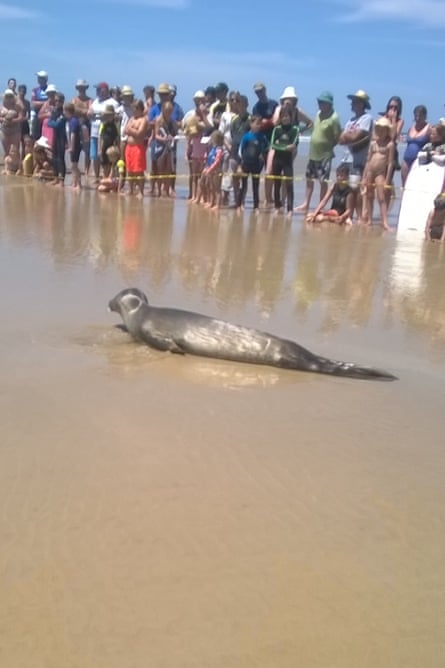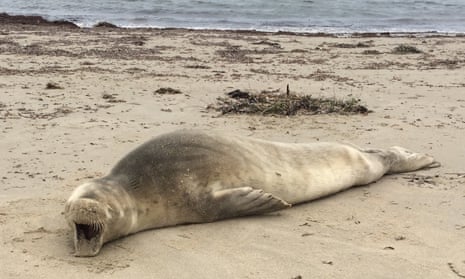A lone crabeater seal, which normally lives on pack ice in Antarctica, has spent a day on Anglesea beach in Victoria, the first of its type seen in the state since 1999.
It is only the 11th time the species has been recorded in Victoria since records began in 1856.
The seal was spotted on a beach near the mouth of the Powlett river in south Gippsland, then at Flinders on the Mornington peninsula, before arriving in Anglesea on Sunday.
Zoologists from the Department of Environment, Land, Water and Planning have identified the seal but cannot say what brought it to Victoria.
The species is a true seal, which differs from the common seal species in southern Australia, known as eared seals, both for their ears and hind flippers – which in true seals are used to propel the mammals on land.
Crabeater seals have a reputation for being friendly and approachable with humans.

“The last time a crabeater seal was seen in Victoria was at Lake Tyers beach in 1999, with the previous nine sightings dating back more than 150 years at the Lakes Entrance area, Port Campbell, Warrnambool, Portland and Port Phillip Bay,” said the environment minister, Lisa Neville.
“So it’s a rare privilege indeed to see this Antarctic species on our shores this month, let alone one this cute and accessible.
“It’s understandable that people at Anglesea are excited to be near the animal but we do ask them to keep the lawful and safe distance of 30 metres from it. Let’s hope the seal does not become distressed or disoriented and is able to safely make its way to Antarctica.”
Shelley Hyndman, president of the Surfcoast Wildlife Shelters Group, was at the beach on Sunday to monitor the seal and make sure people kept their distance. Hyndman and other wildlife carers sent footage of the seal to Zoos Victoria’s marine response unit, which tracks unusual sea animals.
She told Guardian Australia the seal was about 18 months old, roughly the age when young male seals strike out on their own. It was underweight, indicating it might not have the hang of it yet.
“We ended up calling him Felix and saying he really just needed to get himself a girlfriend to show him how to be a seal so he can get out there and catch some fish,” Hyndman said.
She said the seal had returned to the water with the high tide on Sunday afternoon.
Additional reporting by Calla Wahlquist

Comments (…)
Sign in or create your Guardian account to join the discussion